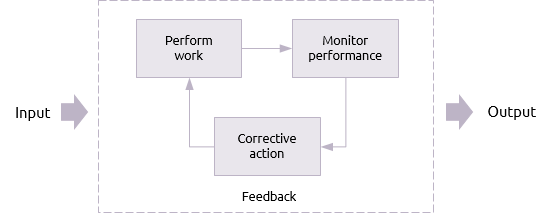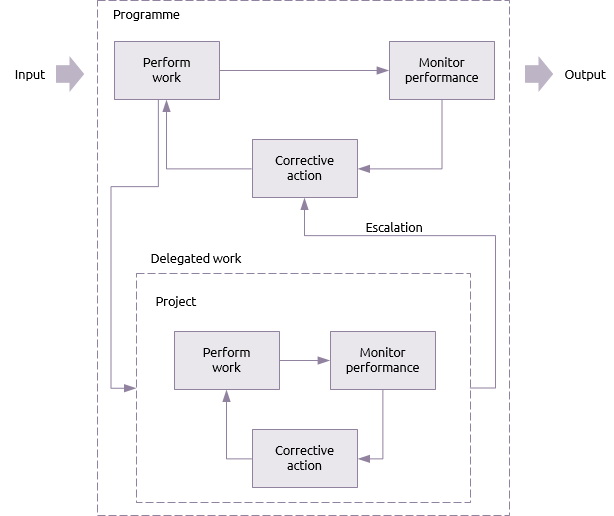Cybernetic control is evident in all aspects of nature and technology. It occurs when a closed system regulates itself using a feedback loop. Examples range from a body cooling itself through perspiration to a safety valve on a steam engine.
The diagram below shows a simple first order cybernetic control system in the P3 management context.

In this case the input would be the baseline delivery plans. Performing work, monitoring performance and taking corrective action are all part of the delivery process. The output is completed objectives.
This could represent a simple project but as projects get large enough to need decomposition into work packages the control system becomes second order, where one feedback loop is nested within another.
The diagram below shows a second order control system in the context of a project within a programme. The principle is the same for a project and subproject or a portfolio and a programme.

The system now shows that the programme manager is performing day-to-day control of the programme and is delegating work to project managers. The project managers perform day-to-day control on their projects but have triggers that cause them to escalate problems to the programme manager (who is also filling the project sponsor role in this example). The escalation is caused by the feedback indicating that the project has, or is predicted to, breach its tolerances.





